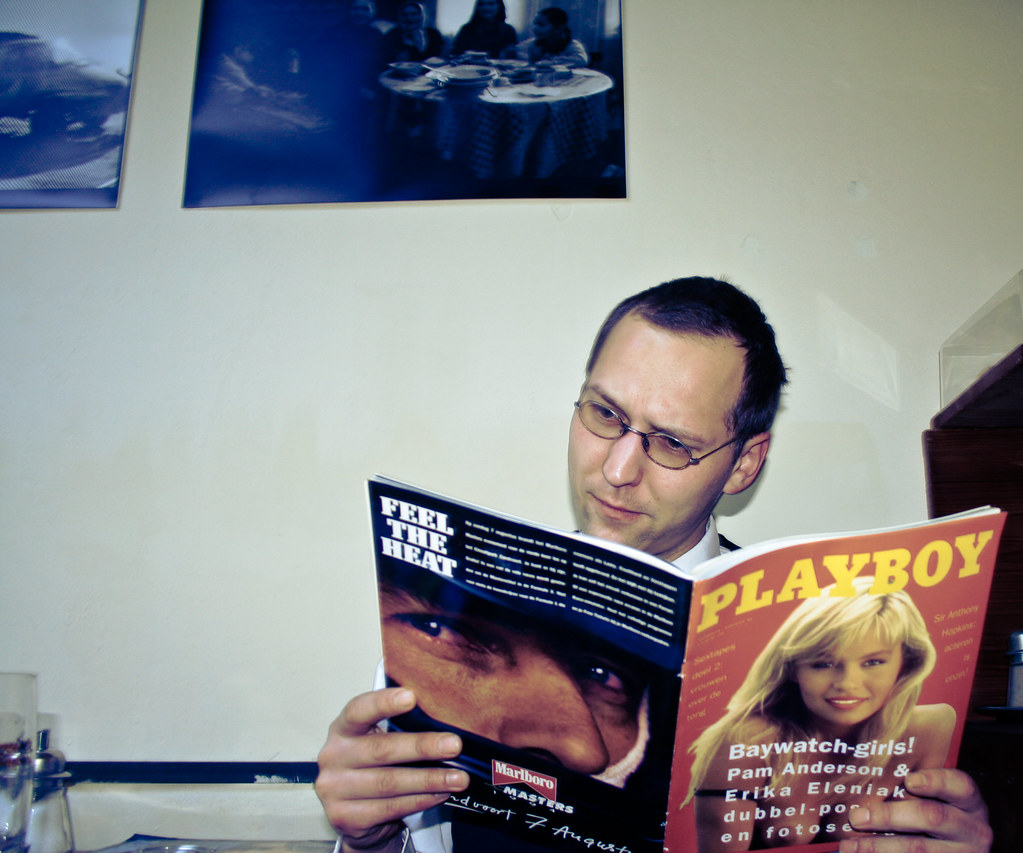
Yasmine Bleeth. The name alone conjures images of sun-drenched beaches, iconic red swimsuits, and the undeniable glamour that defined the 1990s. As Caroline Holden on “Baywatch,” she captivated over a billion weekly viewers at the height of the show’s popularity, cementing her status as a global sensation and a fixture on “Most Beautiful People” lists. Her smile was infectious, her presence magnetic, and for a time, it seemed an endlessly successful career lay ahead for the talented actress. Yet, beneath the shimmering surface of Hollywood fame lay a deeply personal struggle, one that would dramatically alter the course of her life and career.
Her story, in many ways, is a poignant reminder of the intense pressures and hidden challenges that can accompany celebrity. It’s a narrative not just of a star, but of a person navigating profound difficulties, often in the unforgiving glare of the public eye. While some observers viewed her struggles with judgment, others approached them with compassion, recognizing the complexity of addiction as a sickness. Regardless of perspective, the path Yasmine Bleeth ultimately took was profoundly shaped by her personal battles, offering a powerful, human-interest lens into the realities behind the headlines.
Today, we embark on an intimate journey, delving into the tragic details that marked a significant chapter in Yasmine Bleeth’s life. This is not merely a recounting of events, but an exploration of the personal tolls, the moments of vulnerability, and the enduring resilience of a woman who once shone so brightly, only to face a deeply challenging and ultimately transformative odyssey. We’ll uncover the layers behind the fame, focusing on the human experiences that often remain unseen.

1. **Early Start & Rise to Stardom: From Commercials to ‘Baywatch’ Icon**Yasmine Bleeth’s journey into the entertainment world began remarkably early, not with a dramatic role, but as a child in commercials. Her radiant presence was first captured at just 10 months old in 1969 for a Johnson & Johnson’s No More Tears baby shampoo advertisement, a truly astonishing start to a career. By age 6, she was charming audiences on “Candid Camera,” and later that year, she graced a Max Factor cosmetic campaign, catching the discerning eye of fashion photographer Francesco Scavullo, who featured her and her mother in his book, “Scavullo Women.” This early exposure showcased a natural talent and undeniable appeal, laying the groundwork for a future in the spotlight.
Her transition to acting proper saw her taking on her first film role at 12, opposite Buddy Hackett in “Hey Babe!” in 1980. The 80s also brought her into the world of soap operas, beginning with her role as Ryan Fenelli on “Ryan’s Hope” in February 1985, a part she held until the show’s conclusion in 1989. Following a period of personal grief after her mother’s passing, she returned to television, landing the role of LeeAnn Demerest on “One Life to Live.” These early experiences honed her craft and prepared her for the role that would change everything.
Then came “Baywatch.” Her portrayal of Caroline Holden brought her widespread attention, catapulting her to global stardom. The show, an action-drama about Los Angeles lifeguards, was a cultural phenomenon, reaching an astounding 1.1 billion weekly viewers at its peak. Yasmine Bleeth quickly became synonymous with the show’s iconic image, earning a spot on People magazine’s “50 Most Beautiful People” in 1995 and appearing on FHM’s “100 Sexiest Women in the World” for several years. She launched her own swimwear line, Yaz Wear, further solidifying her status as a sex symbol and fashion icon. This period marked the apex of her public career, where success and adoration seemed boundless.

2. **The Glamour and the Hidden Struggle: A Stark Contrast**The 1990s were undeniably Yasmine Bleeth’s decade. Her role as Caroline Holden on “Baywatch” not only made her a household name but also established her as a global symbol of beauty and allure. With magazine covers, modeling gigs, and numerous accolades like being named one of People magazine’s “50 Most Beautiful People” in 1995 and consistently appearing on FHM’s “100 Sexiest Women in the World” lists, she seemingly had it all. The world saw a confident, glamorous star, embodying the carefree spirit of the California coast, radiating health and vitality.
Behind this dazzling façade, however, a much darker narrative was unfolding. As the cameras rolled and the public adored her, Yasmine was quietly grappling with profound personal issues. The pressures of fame, coupled with perhaps underlying vulnerabilities, led her down a path of substance misuse. This stark contrast between her public image of perfection and her private struggles creates a deeply moving human-interest story, one that many celebrities unfortunately share.
It’s a powerful reminder that outward success and acclaim do not always equate to inner peace or happiness. While fans may have envisioned a long and smooth career ahead for Bleeth, her personal issues, particularly her struggle with drug use, began to overwhelm her, hidden from plain sight. This period highlights the beginning of a tragic disconnect between who she appeared to be and the internal battles she was fighting, setting the stage for the dramatic shifts that would define her subsequent years.

3. **The Cocaine Habit Takes Hold: Easing Pain, Deepening Addiction**Yasmine Bleeth’s struggles with substance misuse were not a casual indulgence, but a deeply personal coping mechanism. As she bravely revealed in her February 2003 essay for Glamour, she turned to drugs as “a way to forget her problems.” This candid admission sheds light on the emotional landscape that fueled her addiction, indicating a profound need to escape pain rather than simply seeking a recreational high. For Bleeth, cocaine provided an immediate, albeit temporary, reprieve from the difficulties she faced, particularly in her romantic life.
She articulated this connection vividly, stating, “The way I saw it, cocaine was easing me through the problems I was still having with my boyfriend. On cocaine, I didn’t think about the problems. I had no pain.” This insight into her mindset reveals the insidious nature of addiction, where a substance becomes a perceived solution to emotional distress, creating a dangerous cycle of dependence. What might have started as an attempt to self-medicate quickly spiraled into a full-blown habit, illustrating how easily one can become entrapped.
The convenience of her addiction further cemented its hold. Bleeth recounted how getting cocaine became as simple as ordering takeout: “It was like ordering Chinese food. I made one phone call, and they delivered it to my front door.” This ease of access, combined with her internal struggles, allowed the habit to snowball, transforming from social use into a solitary, overwhelming compulsion. Her confessions laid bare the profound grip cocaine had on her life, marking a critical, tragic turning point.

4. **Fired from ‘Baywatch’: A Career Devastated by Addiction**Perhaps the most publicly visible consequence of Yasmine Bleeth’s struggle with substance misuse was the abrupt and heartbreaking end to her tenure on “Baywatch.” The very show that had catapulted her to global fame and made her an icon ultimately had to let her go. This decision wasn’t made lightly but stemmed directly from the difficulties her addiction created for the production team. It served as a stark, professional reflection of the personal chaos she was experiencing.
Screenwriter Douglas Schwartz, in Esquire’s 2012 oral history of “Baywatch,” offered candid insight into the challenges they faced: “We had one issue with Yasmine Bleeth, who was doing drugs at the time, and so we were dealing with Yasmine not showing up and having difficulties, again with men.” He continued, explaining the harsh reality for the show: “That’s why we let Yasmine go off the show: because it was too difficult to deal with her after a while.” This statement underscores the profound impact her addiction had on her reliability and professional conduct, making her an untenable presence on set.
Being fired from “Baywatch” was a devastating blow, not just to her career trajectory, but to her identity as a successful actress. It stripped away the very foundation of her public persona and served as an undeniable, painful consequence of her unchecked drug use. This pivotal moment marked a tragic turning point, signaling the beginning of a severe decline from the pinnacle of her fame and highlighting how addiction can dismantle even the most promising careers.
5. **Losing Faith in Love: Drugs as a Companion When Relationships Falter**Yasmine Bleeth’s Glamour essay went deeper than just her drug use, recounting how her addiction became intertwined with her romantic life, particularly her challenging long-distance relationship with businessman Paul Cerrito. Having met Cerrito at a Malibu rehab center, their initial connection was made difficult by their geographical separation—Bleeth often working in San Francisco while Cerrito remained in Los Angeles. This distance, and the inherent struggles of maintaining a relationship under such circumstances, began to chip away at her belief in love itself.
She expressed a profound yearning for a stable, destined connection, writing, “You hear about people who are made for each other; I wanted to be one of those people. I was tired of feeling hurt. I was losing faith in love. I just wanted to feel good again. And I knew an easy way to get that feeling.” For Bleeth, this easy way, tragically, was falling back into cocaine use. The drug offered an immediate, if false, sense of comfort and escape from emotional pain, becoming a substitute for the loving connection she craved.
This devastating realization led her to confess, “I had a new boyfriend: drugs.” This poignant statement encapsulates the depth of her emotional reliance on cocaine, highlighting how it consumed her life to the point where it replaced genuine human connection. While she initially ended her relationship with Cerrito during this period, the very struggles they faced underscored how deeply her addiction impacted her capacity for healthy relationships, transforming her quest for love into a tragic descent into drug dependency.

6. **Grave Health Consequences: The Terrifying Physical Toll of Addiction**The hidden battles Yasmine Bleeth waged during the height of her fame extended far beyond the emotional and professional realms; they took a horrifying physical toll on her body. While her fans and even some loved ones might have been unaware of the extent of her internal struggles, she later opened up about the severe health issues caused by her prolonged drug use. Her Glamour essay revealed a particularly shocking diagnosis that underscored the life-threatening dangers of her addiction.
Bleeth detailed how a doctor discovered she had developed gangrene, an extremely serious condition. The infection had aggressively attacked the inside of her nose, leaving it “raw and bloody.” She vividly recalled the gruesome experience of blowing her nose and having “pieces of skin” emerge, a harrowing testament to the damage being inflicted. This graphic description painted a grim picture of the physical devastation her body was enduring, far removed from the pristine image she projected on television.
The doctor delivered a chilling warning: if the infection was left untreated, it could spread to her brain, potentially killing her. This dire prognosis was a profound moment of reckoning, a direct confrontation with mortality caused by her choices. While this terrifying revelation prompted an initial attempt at sobriety, the powerful grip of addiction proved difficult to break, as she relapsed just six weeks later, highlighting the formidable challenge of overcoming such severe dependence even in the face of death.

7. **A Father’s Tears: The Wake-Up Call That Began a Shift**Despite the devastating impact her addiction had on her career and overall life, Yasmine Bleeth was fortunate to have a steadfast support system, most notably her father. In her 2003 Glamour essay, she reflected on their enduring bond, explaining that even as she tried to pull away, he “forced his way back into my life,” making her feel like a “very lucky woman.” This deep connection provided a lifeline amidst her spiraling struggles, demonstrating the power of familial love in the face of adversity.
However, it was her father’s profound emotional reaction to her deteriorated state that served as a monumental wake-up call. In 2001, when he collected her from an airport in Los Angeles, “he took one look at me and started to cry. He said I looked like a shell of myself.” This unfiltered, raw display of grief from her father pierced through her denial, revealing the true depth of how her behavior was affecting those closest to her. She noted her appearance had changed dramatically, describing herself as having lost weight but also appearing swollen, a disturbing combination.
This incident, seared into her memory, became a pivotal turning point. “Seeing the expression on my father’s face and knowing his heart was being ripped out of his body — that was the first time I was truly confronted by how I was affecting other people,” she confessed. It was a powerful, heartbreaking moment that made her finally realize the devastating ripple effect of her addiction, shifting her focus from her own pain to the suffering she was inflicting on her loved ones. This emotional reckoning was a crucial step on her long, arduous path toward recovery.” , “_words_section1”: “1948
8. **The Public’s Gaze: An “Alien” Transformation**As Yasmine Bleeth battled her private demons, the physical manifestations of her addiction began to become alarmingly visible, not just to her distraught father, but to the world. Her status as a celebrated beauty meant every change in her appearance was scrutinized, turning her personal suffering into public fodder. The woman once celebrated for her curves and radiant glow found herself looking dramatically different, a stark and painful contrast to her iconic “Baywatch” image.
She candidly described this transformation in her Glamour essay, admitting, “By the end of 1999, I’d stopped looking like myself.” The changes were profound, extending beyond mere weight loss. Bleeth, who described herself as “a fleshy girl, very curvy and round,” lost her natural softness. Her friends, seeing the alarming shift, remarked that she “looked like an alien, that my eyes were bulging out of my face.” It was a heartbreaking description, underscoring the severity of the internal battle she was waging.
Indeed, her appearance became almost skeletal, moving from a healthy size 6 with a 29-inch waist to a stark 110 pounds and a size 0. Beyond the physical dimensions, Bleeth also observed a more profound loss, lamenting that “all the light” from her eyes had disappeared, leaving her looking “dead.” This visceral self-assessment painted a grim picture of a woman ravaged by addiction, whose inner turmoil was now tragically etched onto her public face. Her team, in an attempt to protect her image, initially tried to cover up these issues, with her publicist attributing her struggles to “sinuses” or an “allergic reaction,” but the truth of her declining health was increasingly undeniable.

9. **Relentless Media Scrutiny: Unkind Headlines**While Yasmine Bleeth’s team attempted to shield her from public judgment, the voracious appetite of the media proved relentless. Despite efforts to downplay her struggles, news outlets quickly caught wind of her addiction problems, and their coverage, as is often the case with celebrities, was rarely gentle. Her journey away from substance use and toward sobriety, even when publicly acknowledged, was frequently presented in an unflattering light, adding immense pressure to an already fragile recovery process.
The intense scrutiny Yasmine Bleeth experienced wasn’t entirely new; she had been a target of paparazzi long before her addiction became widely known. Her “Baywatch” castmate Gena Lee Nolin, in a 2017 interview with Cosmopolitan, recalled a particularly egregious example. She recounted an incident where Bleeth merely scratched her nose at a pay phone, only for the *Enquirer* to publish three front-cover pictures, speculating about drug use. Nolin emphasized that at the time, “there was none of that going on,” highlighting the media’s tendency to sensationalize and jump to conclusions, even without genuine cause.
This predisposition to negative coverage only intensified as Bleeth’s addiction became apparent, transforming her private suffering into a public spectacle. The paparazzi, as Nolin further described, were “relentless” and seemed to appear “everywhere,” making any attempt at a normal life or a quiet recovery nearly impossible. This constant barrage of judgment and invasive photography undoubtedly added another layer of immense difficulty to Bleeth’s already challenging path, reminding us of the human cost behind celebrity headlines.
10. **The Secret Burden of Online Shopping**Beyond the visible changes in her appearance and the external pressures of media scrutiny, Yasmine Bleeth’s private battles included another insidious coping mechanism: an online shopping addiction that spiraled out of control. This habit, far removed from the glamour of her public life, became a quiet, solitary ritual, deeply intertwined with the routines her drug use had fostered. It offered a fleeting sense of satisfaction, a momentary escape, much like the drugs themselves.
Bleeth confessed in her Glamour essay that this compulsion involved spending thousands of dollars at a time, often on items she didn’t truly need. She was acutely aware of the irrationality of it all, yet the allure of “instant gratification” was too powerful to resist. She described it as a nightly post-work ritual, alongside other solitary activities like rearranging her linen closet or poring over photo albums, all distractions from the deeper turmoil within.
The financial implications were staggering. “Forget the money I was spending on drugs,” she wrote, “I’d spend literally $5,000 to $10,000 in one night shopping on the Web! I was obsessed. Shopping was instant gratification. Just like the drugs.” This poignant comparison highlights how deeply entrenched her need for immediate pleasure and distraction had become, replacing healthy coping strategies with destructive cycles, further illustrating the complex web of her private struggles during this dark period.
Read more about: Fast Food Frenzy: 9 Wild Customer Requests That Leave Workers Shaking Their Heads (and Why You Should Skip Them!)

11. **A Fateful Accident: A Turning Point for Sobriety and Love**Amidst her spiraling addiction, a critical event in 2001 served as a jarring wake-up call, one that profoundly altered Yasmine Bleeth’s life and, remarkably, saved her relationship with Paul Cerrito. Despite attending rehab previously, Bleeth had relapsed, finding it difficult to break free from cocaine’s grip. It was during this fragile period that a car accident in Detroit forced a dramatic and undeniable confrontation with her addiction and its consequences.
The incident occurred as she and Cerrito, whom she had met at a Malibu rehab center, were heading to Detroit Metropolitan Airport. Bleeth drove her car off Interstate 94 onto a median strip, leading to her arrest for cocaine possession. This highly publicized event made headlines, thrusting her struggles once again into the unforgiving glare of public scrutiny. Wayne County assistant prosecutor Chris Coyle confirmed that she was “treated just like any other first-time drug offender,” facing charges with no prior record.
While traumatic, this accident proved to be a pivotal moment of divine intervention, as Bleeth herself later described it. She realized with painful clarity, “I couldn’t have drugs and love at the same time.” Cocaine had become “her best friend, her lover, her parents — they become everything to her,” eclipsing genuine human connection. The near-loss of her relationship with Cerrito, coupled with the legal repercussions, provided the desperate catalyst she needed to truly commit to sobriety, ultimately forging an enduring bond that transcended their shared struggles.

12. **A New Beginning: Marriage and a Quieter Life**Following the harrowing car accident and its immediate aftermath, Yasmine Bleeth embarked on a truly transformative path toward recovery and a profoundly different life. The legal consequences of her arrest led to a plea bargain in November 2001, where she pleaded guilty to possessing less than 25 grams of cocaine and to driving while impaired. In January 2002, she was sentenced to two years of probation and 100 hours of community service, a structured framework that helped solidify her commitment to staying clean.
Her lawyer, Jerry Sabbota, emphasized that Bleeth was satisfied with the plea bargain, noting that her record would be cleared of any felonies upon fulfilling her probation terms. “When all is said and done she’ll have a traffic ticket on her record. She wasn’t treated any better than anyone else, and she wasn’t treated any worse,” Sabbota stated. Crucially, Bleeth continued to receive therapy from the founder of the Promises Rehabilitation Clinic, underscoring her ongoing dedication to her recovery journey.
Just two years after meeting at the rehab center, and less than a year after the life-altering accident, Yasmine Bleeth and Paul Cerrito solidified their enduring love, marrying on August 25, 2002, at the picturesque Bacara Resort in Santa Barbara, California. This union marked a significant new chapter, a testament to their shared resilience and commitment to a life free from addiction. They established two homes, splitting their time between Los Angeles and Scottsdale, Arizona, creating a more private and stable existence far removed from the constant pressures of Hollywood.

13. **Embracing Privacy: A Deliberate Retreat from the Limelight**With her marriage to Paul Cerrito and her dedication to sobriety firmly established, Yasmine Bleeth made a deliberate and profound decision to retreat from the unforgiving glare of the public spotlight. Once a television darling and a fixture on “Most Beautiful People” lists, she consciously chose a life of privacy, making herself largely M.I.A. from Hollywood. This calculated withdrawal allowed her to prioritize her health and well-being, fostering a quieter existence that contrasted sharply with her “Baywatch” days.
Updates on Yasmine’s life became incredibly rare, surfacing primarily through occasional paparazzi sightings, which themselves would generate significant media attention. In 2020, for instance, she caught the media’s eye again when photographed walking her dog in Southern California. These fleeting glimpses, often showing her cosmetic-free and in everyday attire, would inevitably spark renewed conversations about her changed appearance, yet they also underscored her commitment to a life away from the high-glamour demands of her past career.
This intentional absence from public life, as noted in *Esquire*’s 2012 oral history of “Baywatch,” saw her living a contented life with Cerrito, reportedly turning down acting offers. Her decision to step away was a powerful act of self-preservation, demonstrating that for her, health and happiness transcended the allure of fame. While fans might still wonder about the trajectory her career could have taken, Bleeth’s choice revealed a deep-seated desire for peace and normalcy, embracing a life defined by personal fulfillment rather than public acclaim.

14. **A Quiet Comeback and Lasting Serenity**For nearly two decades, Yasmine Bleeth maintained her deliberate distance from the acting world, a testament to her commitment to a private and stable life. However, in 2021, fans were delighted by a surprising, albeit quiet, return to the screen. She made an appearance in the indie comedy “Whack the Don,” sharing the screen with Richard Grieco, another familiar face from her past, with whom she had once been in a relationship. This brief re-entry into acting, though, did not signify a full-blown return to the Hollywood machine.
Her appearance in “Whack the Don” was an exception, rather than a reversal of her chosen path. For the most part, Bleeth continues to live a remarkably private existence, maintaining her distance from the relentless demands and temptations of celebrity culture. *Baywatch* screenwriter Michael Berk offered valuable insight into this choice in *Esquire*’s oral history, noting that “Yasmine basically retired” to focus on staying sober. He added, “She was an actress at the time she was a little girl, she was very smart with her money, and I think she invested well.” This suggests a thoughtful and deliberate approach to her financial future, allowing her the freedom to choose her own path.
Read more about: The Billionaire’s Oasis: Diving Deep into Rick Ross’s “Wet Wet” – A Symbol of Success and Inspiration
Yasmine Bleeth’s journey is a powerful narrative of triumph over adversity, a testament to resilience and the profound capacity for change. Her ongoing commitment to sobriety, her enduring marriage to Paul Cerrito, and her choice to embrace a life away from the spotlight speak volumes. She may no longer be gracing magazine covers or running in slow motion on the beach, but in her quiet pursuit of well-being, she has found a peace and stability that glittered fame could never truly provide. Her story serves as an inspiring reminder that true success often lies not in public accolades, but in the private victories that shape a life of genuine serenity and contentment.






